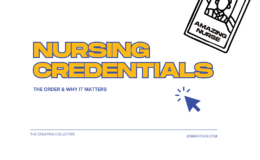This is part eight of the Nursing Research Challenge. (C’mon, join in the nursing research reading and sharing!) This is the “Nursing” Research Challenge, so I am keen on using articles from only nurse scientists, but I couldn’t resist this article. (Some of the authors may, indeed, be nurses, but it was unclear from the “author affiliations.”) It intrigues me, as I studied operations management in business school with very few healthcare-related examples from which to learn. (For example, how do you staff the right skill mix to effectively reduce wait times in the emergency department? It is not simply a guess. It is “operations management,” an entirely different specialty within the business sector.) Multidisciplinary learning is goooood.
The Article: Forsberg, H., Aronsson, H., Keller, C., & Lindblad, S. (2011). Managing health care decisions and improvement through simulation modeling. Quality Management in Health Care, 20 (1): 15-27.
Big Idea: Simulation modeling is a way to test plans and interventions in a safe, created environment before actual implementation to get instant feedback on outcomes. Simulation modeling is frequently used in engineering, production and manufacturing, and public systems. It is also used in service industries such as the healthcare system, albeit less frequent. Just as healthcare professional students utilize simulation techniques via mannequins where actual risk is low, process improvements throughout the healthcare system can be tested in low-cost, low-risk environments before implemented, further enhancing the learning and the actual process outcomes. This article reviewed the literature for improvement in healthcare environments through simulation modeling as well as implementation of those simulated process models.
Survey Says!: With few restrictions on literature review article inclusion, only 59 articles were found to focus on simulation modeling in healthcare management decisions. Even more of a research gap was revealed as only 14 of the articles focused on actual implementation of those simulated improvements. Articles covered five topics – 1) hospital scheduling and organization, 2) infection and communicable disease, 3) costs of illness and economic evaluation, 4) screening, and 5) miscellaneous.
Quotable: “A multitude of decisions are made daily in all health care contexts. Some have large consequences, others small; some go as planned, others not. How can we analyze and understand our intended changes and innovations before they take place to ensure that they match the need of health care” (p. 21)?
“By providing similar access to safe environments through simulation models, for example, virtual or micro worlds, health care decision makers and practitioners could create, test, and develop innovations before implementing them. Such a safe environment helps managers and decision makers to understand their own system by testing scenarios and receiving instant feedback, diagnosing problems, visualizing a plan, develop understanding and consensus, and finally prepare for change” (p. 22).
So What?: While clinical simulation has quickly gained acceptance, healthcare management simulation is lagging. Low-risk environments for simulation can contribute to professional learning and foster system-wide process improvements. Importantly, more research is needed in regards to simulation modeling in healthcare environments, specifically implementation of simulated interventions.





